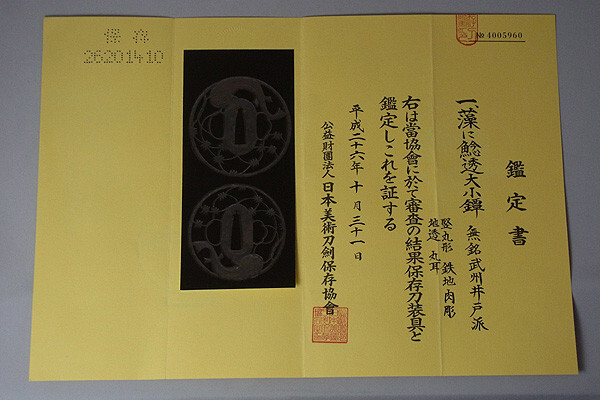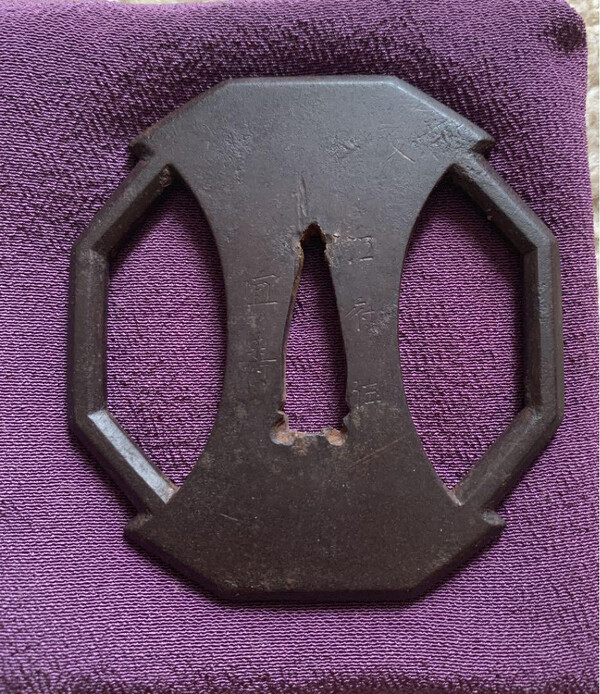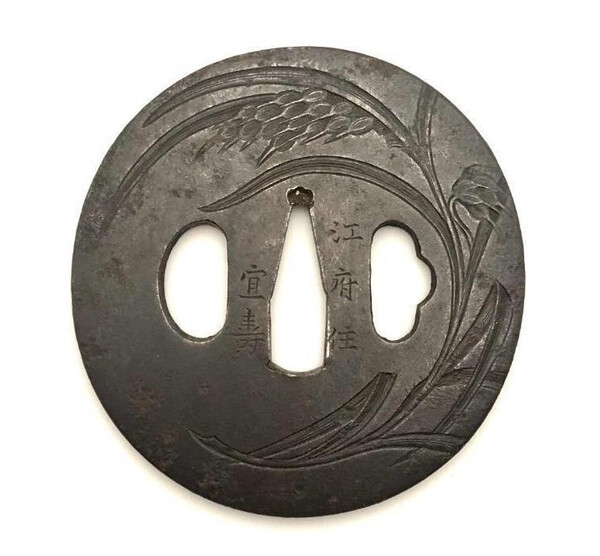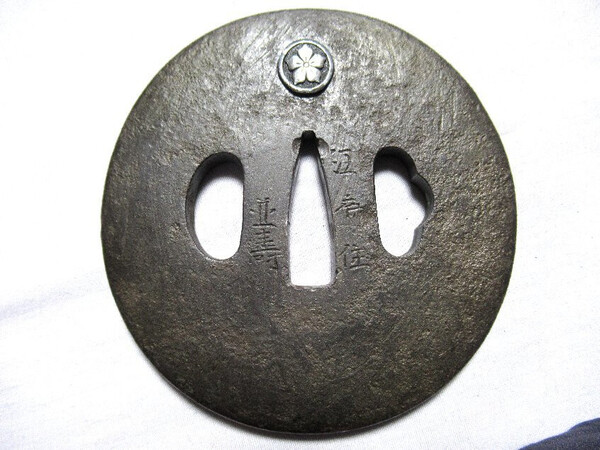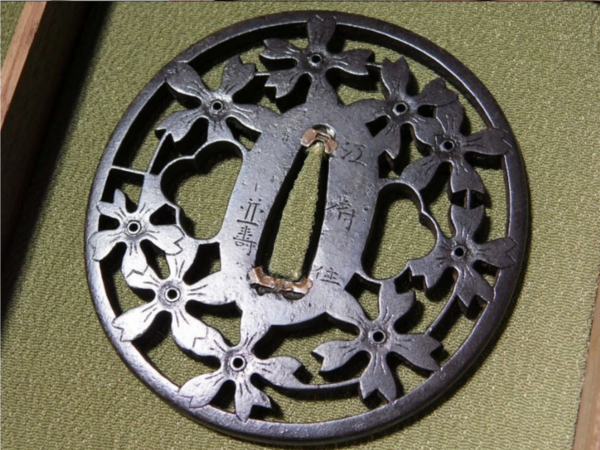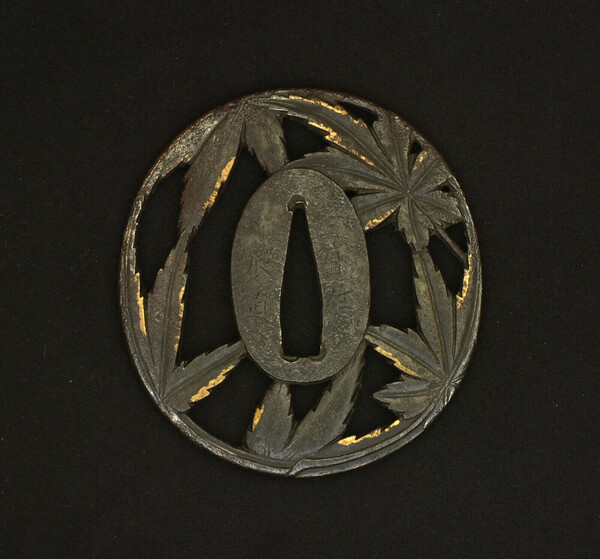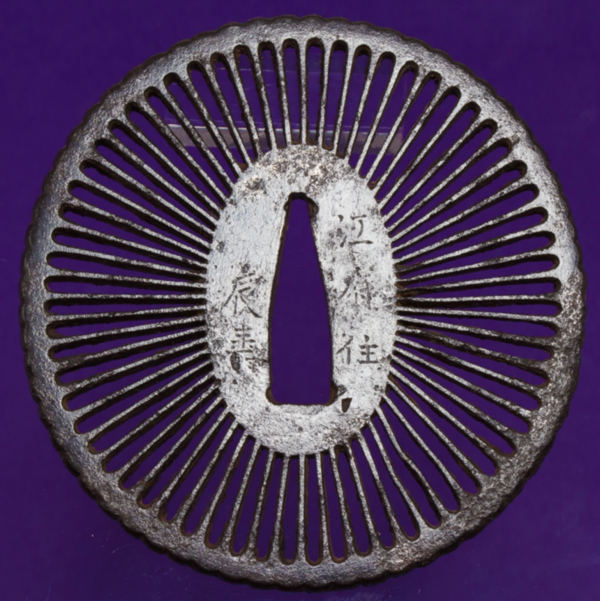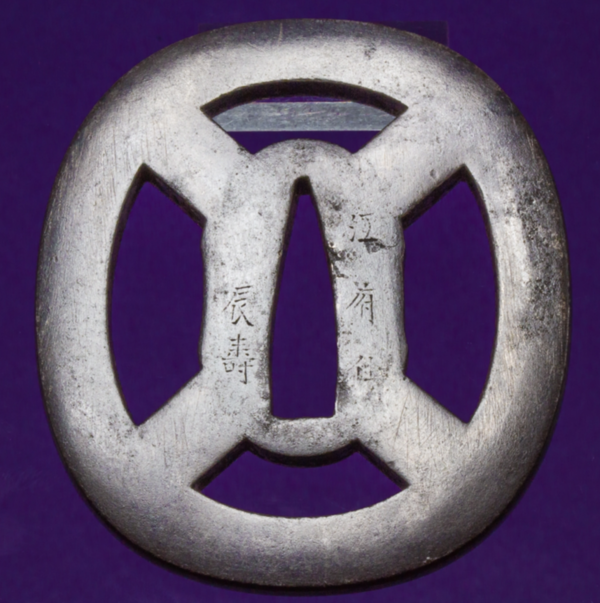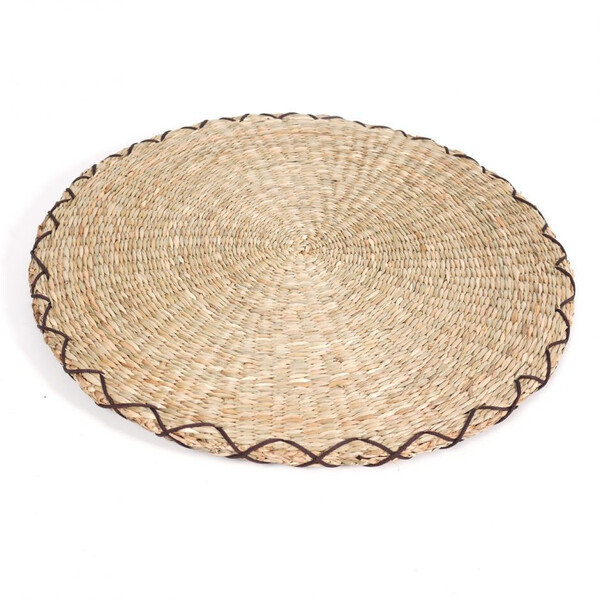-
Posts
756 -
Joined
-
Last visited
-
Days Won
4
Everything posted by PietroParis
-
It might be another follower of Tatsutoshi, although he is not listed in Sesko's genealogy.
-
Of course, how embarrassing that I would screw up the main guy's name!!!
-
I am certainly not in the position to argue, but many times in this forum I have read that 江符 can equally be read Efu or Kōfu (both meaning Edo). See e.g. here.
-
OK, you like to make us non-Japanese readers earn our bread on google translate... 長寿 Tatsutoshi 江戸 Edo 赤尾家 の 門人井戸忠七, disciple of the Akao family, Ido Chūshichi 本所森下町住 Lives in Honjo Morishita-cho 文政 Bunsei (1818-1830) According to Sesko, 忠七 Chūshichi was Tatsutoshi's real name, it would then seem that 井戸 Ido was his family name. It stands to reason that he and his students form the Ido school. The left entry on Yasutoshi is much less specific: 保寿 Yasutoshi 近江 Ōmi (former province located in present-day Shiga Prefecture, see here) 江府住 保寿 作 Kofu-ju Yasutoshi Saku (his standard signature?) 伊藤一派 Itō school Nothing here points to him being a student of Tatsutoshi. I am just puzzled by the fact that Shiga prefecture is relatively far from Tokyo, why would he sign "Kofu-ju"? Or maybe it means that he was originally from Ōmi and then moved to Edo?
-
Many thanks Steve for this precious information!!! Sesko's Genealogy (see here) lists Yasutoshi as a "grandchild" of Tatsutoshi. I suppose there is a great deal of guesswork involved anyway...
-
Hi All, I am trying to understand a sentence in Markus Sesko's Genealogies (see here) stating that my beloved tsuba maker Tatsutoshi was "founder of the Ito school (井戸)". Sesko also adds that "This name might also be pronounced as Ido". I was quite confused because, according to this site, the well-known "Bushū-Itō" and "Odawara-Itō" schools were founded by two artists, Itō Jinzayemon and Itō Masatsugu, who do not seem to be related to Tatsutoshi. Those schools have separate entries on pages 111 and 112 of Sesko's book, to which unfortunately I do not have access. Then I thought I had understood that Ito/Ido (井戸) and Itō (伊藤) are in fact two different names, so maybe the school supposedly founded by Tatsutoshi has nothing to do with Bushū-Itō (see here). However, I have now found a NBTHK certificate that refers to 武州井戸派, i.e. Bushū-Ito/Ido school! This is for comparison a certificate referring to the (more usual?) 武州伊藤派 Bushū-Itō school: Now I would like to understand: are 井戸 and 伊藤 interchangeable, or are these two certificates referring to different schools? And most importantly (for me): how (if at all) is the Ito/Ido (井戸) school supposedly founded by Tatsutoshi related to the Bushū-Itō" and/or "Odawara-Itō" schools? Thanks in advance for any help!
-
To compound my confusion, here is a certificate with 武州井戸派 (Bushū-Ito/Ido school)... P.S. many thanks to SteveM for precious clarifications on the Itō/Ito issue in this other thread !
-
While trying to identify the 宜寿 mentioned above, I noticed a detail that may be relevant here: The Ito/Ido school that according to Sesko's Genealogies was founded by Tatsutoshi has a short "o", and is written 井戸 . It is not clear to me whether this is the name of a place or of a family. In contrast, the Itō in Bushū-Itō school has a long "o" (indeed, it is sometimes transcribed as "Itoh", "Itoo", "Itou"), and it is written 伊藤 . This appears to be the family name of the school's founder, see also this site. Thus, it may be that the two schools are not related after all. I wonder if some more-knowledgeable member can clarify...
-
-
The style of this one from eBay is somewhat familiar, and it is papered Hozon to 宜寿 (Yoshitoshi?). Could it be another student that is missing from Sesko's list? P.S. I noticed that there is another tsuba with this signature earlier in the thread: https://www.militaria.co.za/nmb/topic/32300-tatsutoshi-students/page/2/#comment-404969 P.P.S. I also noticed that the same tsuba is sold at a much lower price on Mercari, a Japanese direct-sale site. The eBay ad might be from one of those parasites who re-sell at inflated prices items they don't yet own.
-
-
I was quite anxious about the condition of the tsuba, but I received it this morning and I am happy to report that there were no hidden problems. A bit smaller than I expected (definitely wakizashi size) but that's on me, I should have paid more attention to the measurements. Another thing that I had not realized from the pictures but was actually a pleasant surprise is that the tsuba is slightly bowl-shaped (wan-gata). Concerning the shipping, I had chosen "Buyee Air Delivery" so the parcel was shipped with FedEx instead of the standard EMS. Alas, they did apply the full 20% VAT rate instead of the reduced 5.5% for antiques, but there's still hope for a reversal, I have not paid yet while I wait for a reply to my complaint. At least they delivered the parcel in the meantime, differently from most other carriers who would threaten to send it back to Japan if you don't pay up.
-
-
-
Turns out there is no "Antique" in the list, but if you choose "Other" you can enter your own text. I went for "Antique iron ornament HS 97069000", because I was afraid that "fitting" alone would sound too ambiguous and "sword fitting" (or "sword guard") would invite trouble. We'll see how it works out...
-
I would add that the pictures of the bare blade on what appears to be a hard marble surface do invite the standard recommendations about basic care...
-
Thank you Dale and Piers for the suggestions. I do see one possible "fundo" in my tsuba, linking the kogai hitsu ana to the rim. For the other two elements (rectangular box and quadrilobe shapes) you may well be right. It would be interesting to understand the link between all of these elements and the goose, but that might be asking too much.
-
After a two-year hiatus, yesterday I had a busy day purchasing tsuba. In addition to the one that I posted in the Tatsutoshi thread, I bought a relatively cheap tsuba on behalf of my elderly mother, who likes this kind of simple ji-sukashi. Here are two pictures from eBay: My first question would be whether anyone can place this tsuba in a period or school (I guess the answer will be "19th century revival" like this one which also ended up with my mother). The second question is about the motif: I can see a wild goose on the left of the first picture, the neck and one of the wings making up the kozuka hitsu-ana. I guess this is copied from an earlier and much finer Akasaka design, see e.g. this page. But what is the rectangular shape that makes up the kogai hitsu ana on the right? And what about the quadrilobe shapes on top and bottom? Thanks in advance for any assistance!
-
Meanwhile, I get this boilerplate reply from the Buyee customer support: Dear Pietro ***, (...) In line with order no. ***, please be advised that the seller has great authority with the auction. The rules of Yahoo Auctions in Japan offer the sellers a great deal of authority. They have the right to choose to whom they wish to sell, and thus they also have the right to cancel bids. Usually, sellers do not provide us with any reasons why they canceled the bid or why they have chosen the winner. We understand that it may not be fair, however, it is unfortunate that this is how Yahoo! Auctions Japan is operated. Sadly, we do not have any influence or control over the rules of Yahoo! Auctions Japan. We hope this mail clarifies your concern. We kindly ask for your kind understanding and cooperation. (...)
-
I see what you mean, unfortunately from buyee I cannot see who the other bidders (if any) were. I guess that, even if I complained, the seller could still claim that the last bid was the only dodgy one, and buyee would cover for them. Maybe on Yahoo! Japan proper this is different, but the page is not directly accessible from the EU. Moreover, I could not just refuse to pay, because buyee automatically takes your money (from PayPal, in my case) as soon as the auction is finished. As I wrote, the system is entirely skewed in favor of the seller. It is not a big deal because the price I paid does not seem outrageous to me - again, barring bad surprises upon reception of the tsuba - but I have to live with the thought that, if I had given up earlier in the bidding war, I might have ended up buying the same tsuba for less...
-
I learned something today that may well be common knowledge for the more experienced members but is perhaps interesting for the beginners. I was bidding on Yahoo! Japan for a tsuba signed Tatsutoshi, and I eventually gave up against a seemingly more-determined competitor. However, just before the end of the auction, I got an email informing me that the seller had cancelled the highest bid, and mine was now on top. The message included the sentence "Yahoo! Japan Auction allows sellers to freely cancel bids from any bidder. They often do so if they see that a particular bidder has a very low reputation, or has some other problems." It now seems obvious to me that the other bidder was the seller him/herself, who was just probing how high I was willing to push. I am of course familiar with the phenomenon of shill bidding on eBay, but there at least the sellers run the risk of buying their own item (and, I presume, pay the resulting fees) if they overestimate the buyer's eagerness. In contrast, the system of Yahoo! Japan is entirely skewed in favor of the sellers, who can probe the buyer's absolute maximum and then just cancel the bid that sent them over the top. I must say that this leaves me with the bitter aftertaste of having been taken advantage of, and spoils a bit the satisfaction of "winning" the tsuba I was after. I just hope that there's no further disappointment in store for when I eventually receive it...
-






